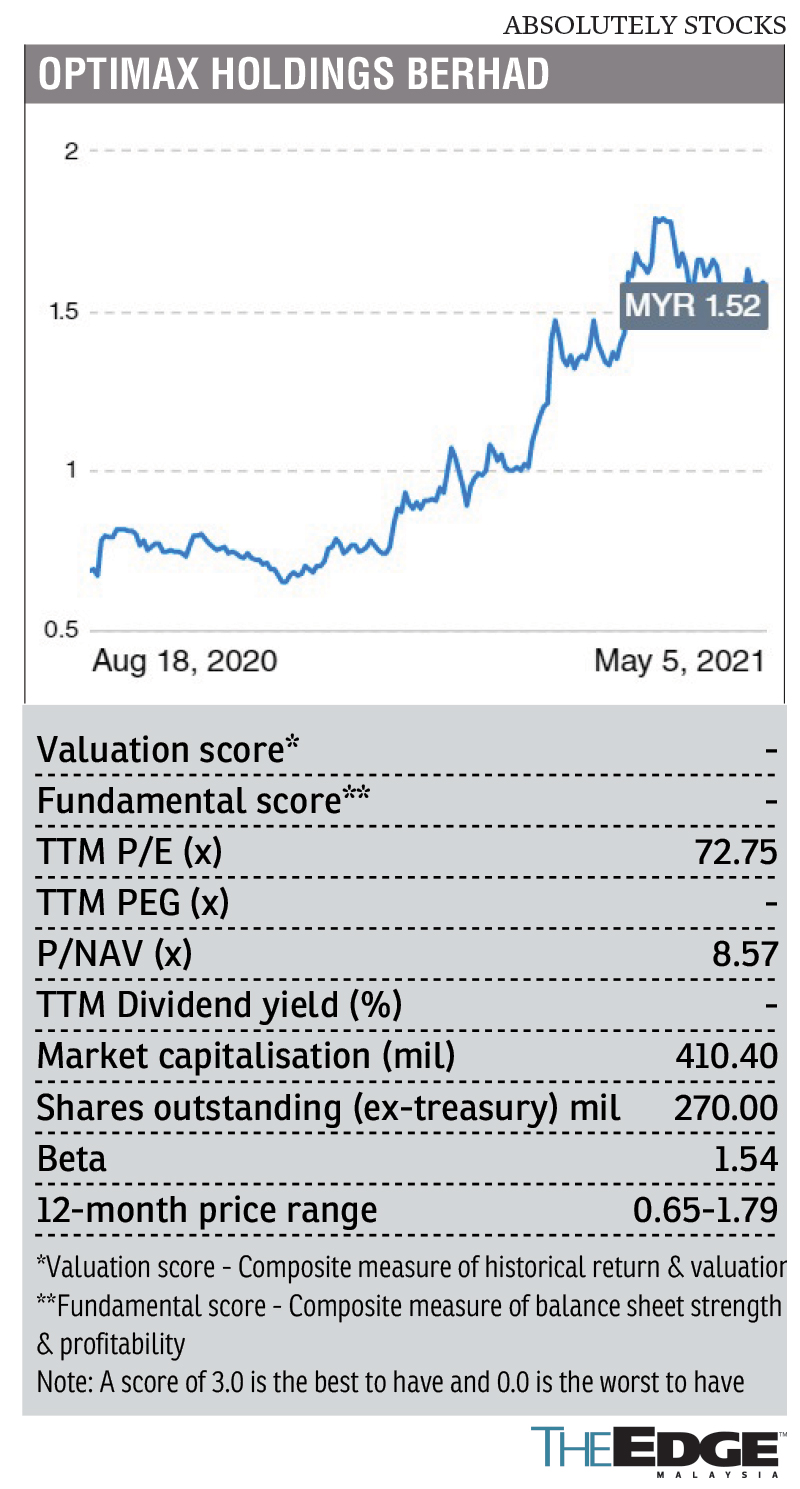
Tan says the group has seen a gradual recovery in the number of patients, including patients for refractive surgeries and cataract surgeries
This article first appeared in The Edge Malaysia Weekly on May 10, 2021 - May 16, 2021
THE growing ageing population in the country plus rising affluence among consumers are expected to result in higher demand for eye-specialist services, according to Optimax Holdings Bhd chief executive officer Sandy Tan.
As the Malaysian population ages, growth is only to be expected, she adds, noting the demand for such services will increase, especially for cataract surgery.
“What differentiates refractive surgery from cataract surgery is that refractive surgery is elective surgery. Cataract, on the other hand, is a disease that when left untreated, could lead to a loss of vision and is the principal cause of blindness,” she explains. Cataract surgeries are expected to continue to be the main revenue contributor to the group going forward.
That said, the increasing affluence among consumers have made elective procedures more popular — including refractive surgery to replace the use of eyeglasses and contact lenses — and oculoplastics for cosmetic reasons.
Tan also highlights the fact that the demand for eye-specialist services could grow over time owing to the increase in non-communicable diseases (NCDs), including hypertension, diabetes and obesity , which may contribute to eye diseases and disorders in the long run. She points out that the sedentary lifestyle of most Malaysians today, especially with the movement restrictions due to the pandemic, coupled with bad dietary and smoking habits, may contribute to a rise in NCDs.
Listed on the local stock exchange in August last year, Optimax anticipates an improvement in earnings this year following disruptions to business operations last year owing to the pandemic and subsequent movement restrictions.
Although eye specialist centres are considered an essential service, the movement control order (MCO) last year resulted in fewer eye surgeries and minimised operational days. It also led to Optimax reducing the number of operational days at some of its specialist centers while a few were temporarily closed as part of precautions to safeguard employees and customers.
However, patient traffic has recovered in the first four months of 2021 compared to 2020 because of the more lenient movement restrictions from January. Thus, the impact on the group is expected to be less severe compared to the first MCO in 2020.
“We are seeing better margins compared to 2020 as there has been a gradual recovery in the number of patients, including patients for refractive surgeries and cataract surgeries, who were earlier advised to postpone their procedures until after the MCO,” Tan says in an email interview .
Moreover, as Optimax’s Klang and Seremban centres are now functioning as ambulatory care centres, she believes that earnings and revenue will rebound this year.
“Both the Klang and Seremban operations were recently converted into ambulatory care centres, which enables us to carry out surgical procedures such as refractive and cataract surgeries, thereby contributing to our business sustainability and growth.”
As the Seremban ambulatory care centre is bigger than its specialist centres, Optimax will be able to cater to a higher number of customers. At the same time, it can also hire more ophthalmologists.
For the financial year ended Dec 31, 2020, revenue declined 7.3% to RM58.02 million from RM62.62 million in the previous year. Net profit decreased 28% to RM5.64 million from RM7.83 million earlier.
However, the group is set on carrying out its expansion plans this year, the pandemic notwithstanding. This includes setting up several satellite clinics to provide eye examination and consultation services, Tan says.
Patients who need surgery will be referred to an Optimax specialist at the nearest ambulatory care centre where they can undergo the requisite surgical procedure.
“This allows us to have more geographical coverage, including in remote areas. We expect low capital expenditure and short gestation in the setting up of satellite clinics. This will help us cater to more customers,” she adds.
Tan says Optimax is always looking for ways to expand its business and does not have a specific target for the number of centres planned for this year.
In particular, it has its sights set on places in Malaysia where it does not have any market presence.
“We are looking to expand our ambulatory care centre network to the east coast in the peninsula, and eventually, we hope to expand to Sabah,” she says, but adds that this would depend on when the ban on interstate travel is lifted.
Optimax is present in Seremban, Kuching, Penang and Ipoh but most of its 13 eye specialist centres in Malaysia are in the Klang Valley and Johor.
Although the rising Covid-19 infections are a concern, Tan believes Optimax’s prospects are intact as there will always be demand for eye specialist services.
Based on the company’s prospectus, the treatment of eye diseases and disorders contributed about 42% to group revenue in FY2019, followed by refractive surgery (36%) and consultation and dispensary services (15%). Oculoplastics made up about 1% of revenue.
Since closing at 69 sen on its first trading day on Aug 18, 2020, Optimax’s share price has more than doubled. It closed at 1.54 last Thursday, valuing the company at RM407 million.
Save by subscribing to us for your print and/or digital copy.
P/S: The Edge is also available on Apple's App Store and Android's Google Play.
- Sumbangan Asas Rahmah credited on April 1, recipients describe it as Syawal windfall
- Directors cannot be automatically retired without an AGM, Court of Appeal rules
- LSH unit assumes management of KL Tower for 20 years until end-March 2045
- Gas pipeline blaze: Immediate financial aid for over 100 affected residents, says PM
- Gas pipeline blaze: 190 houses, 159 vehicles damaged

